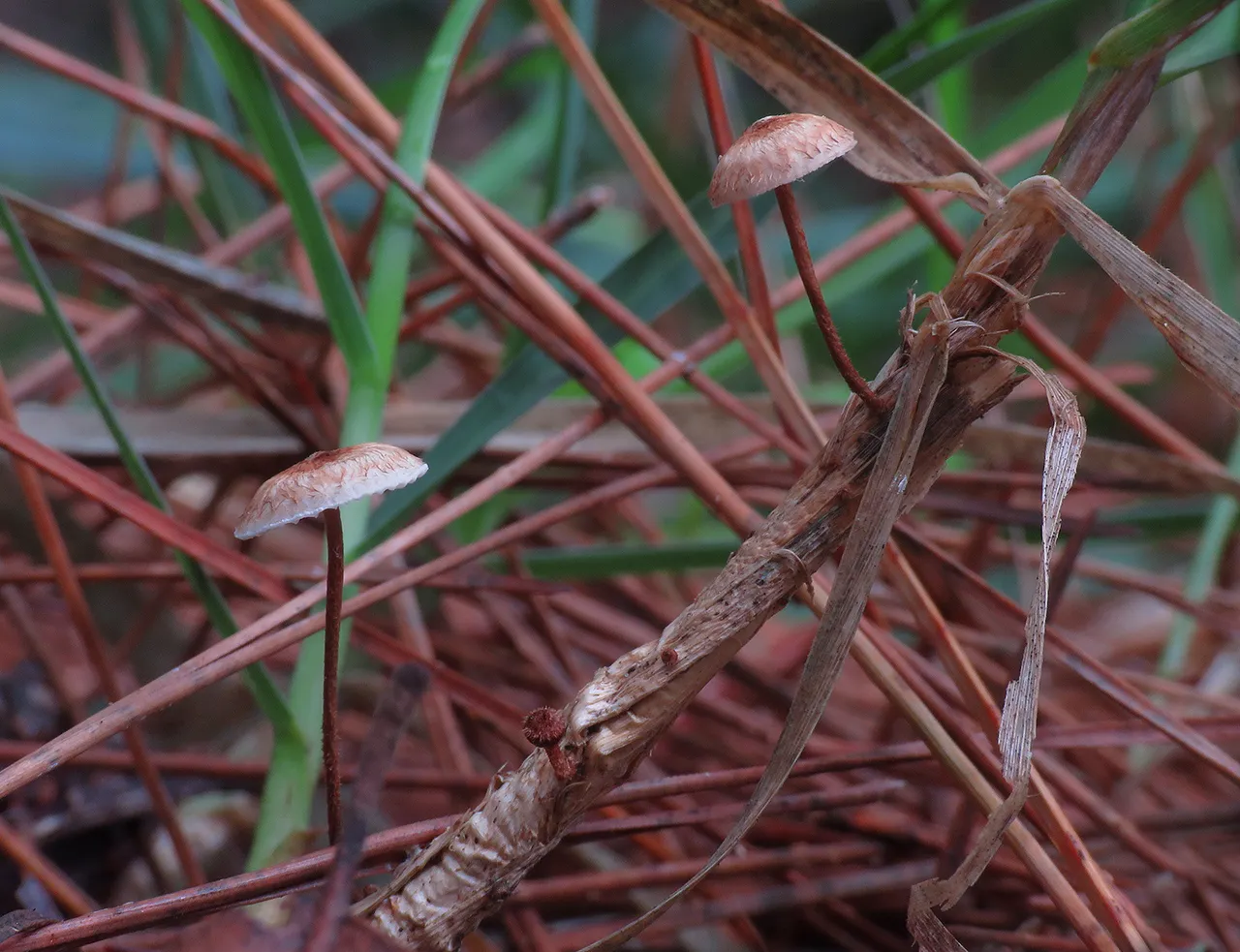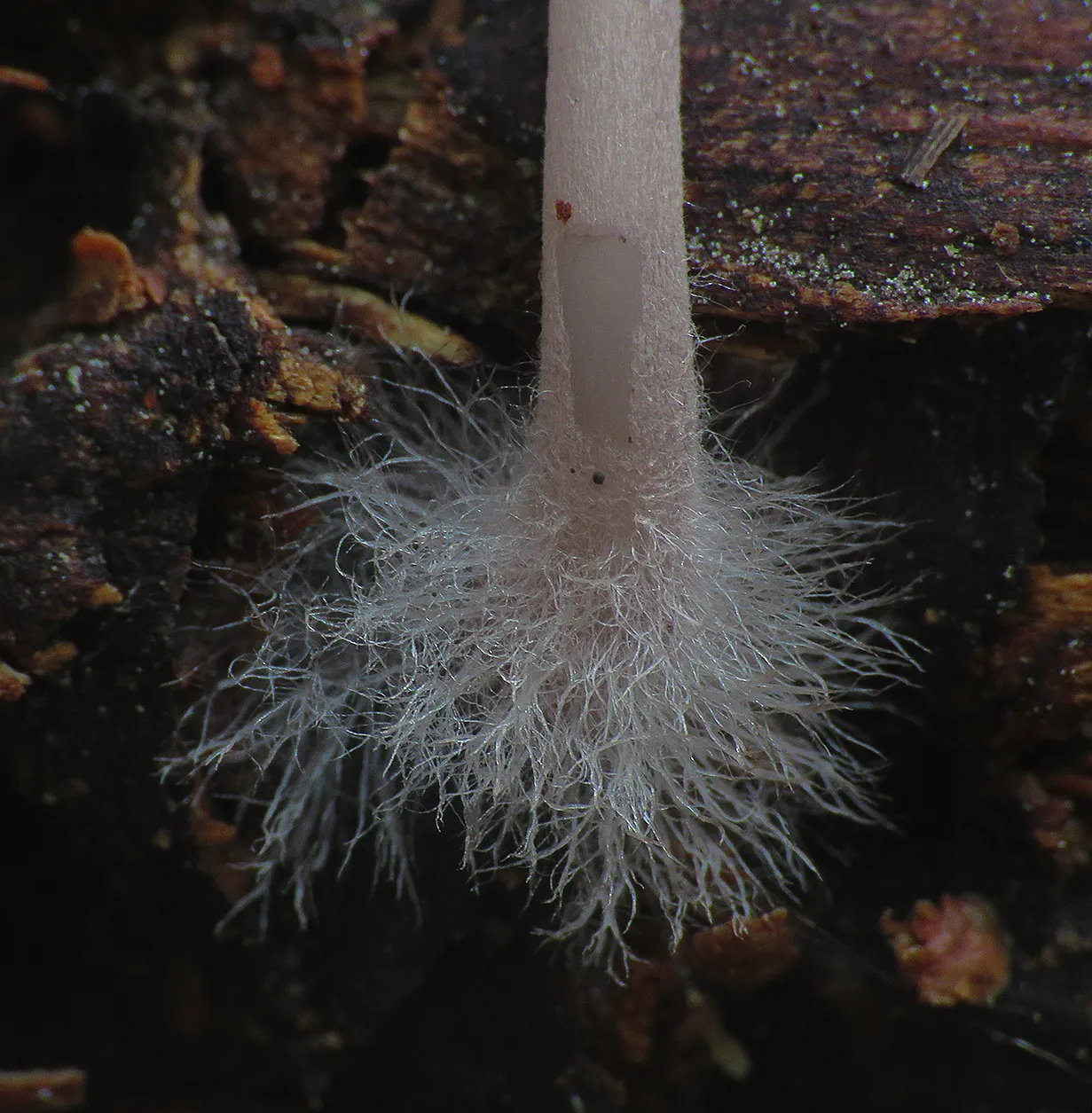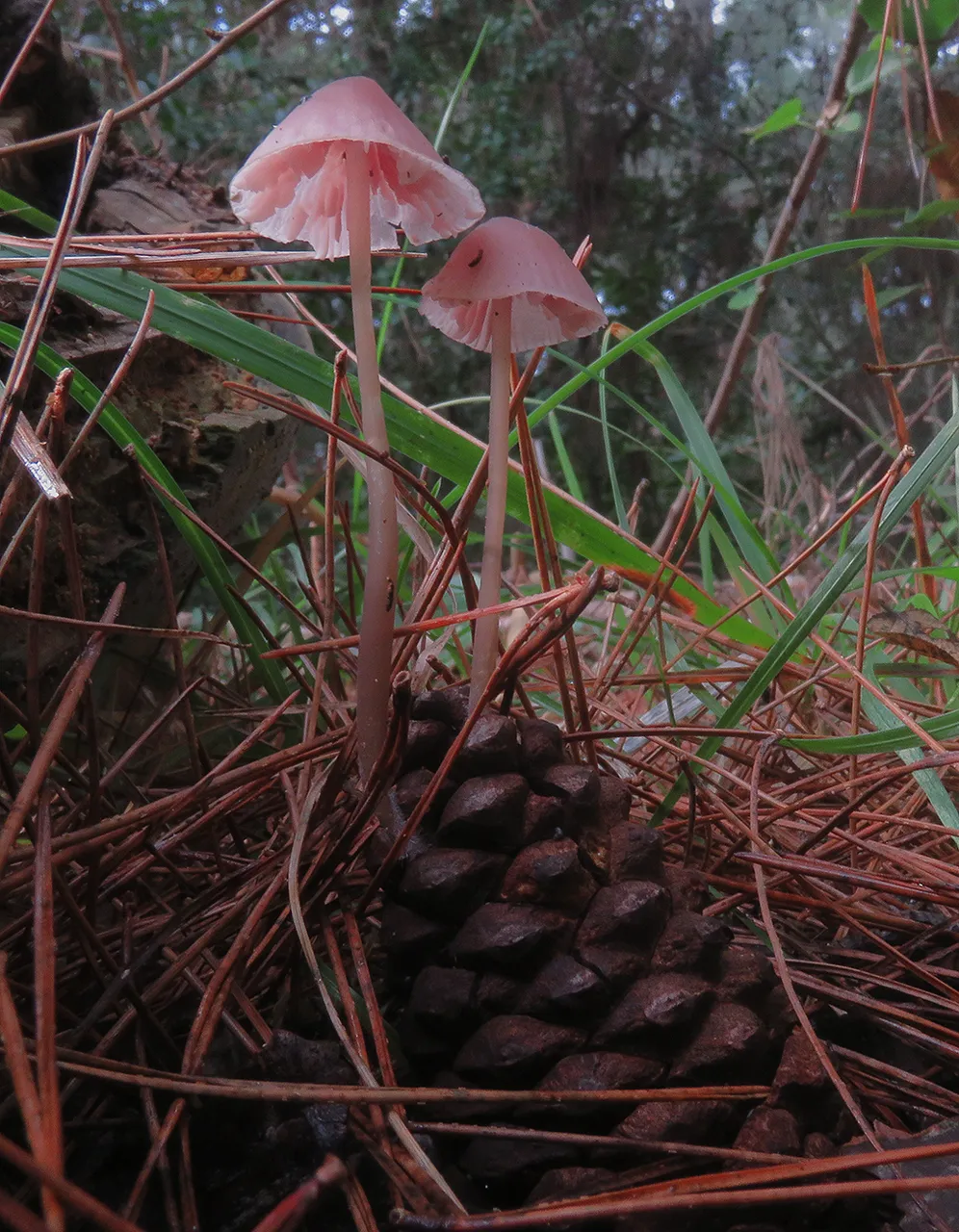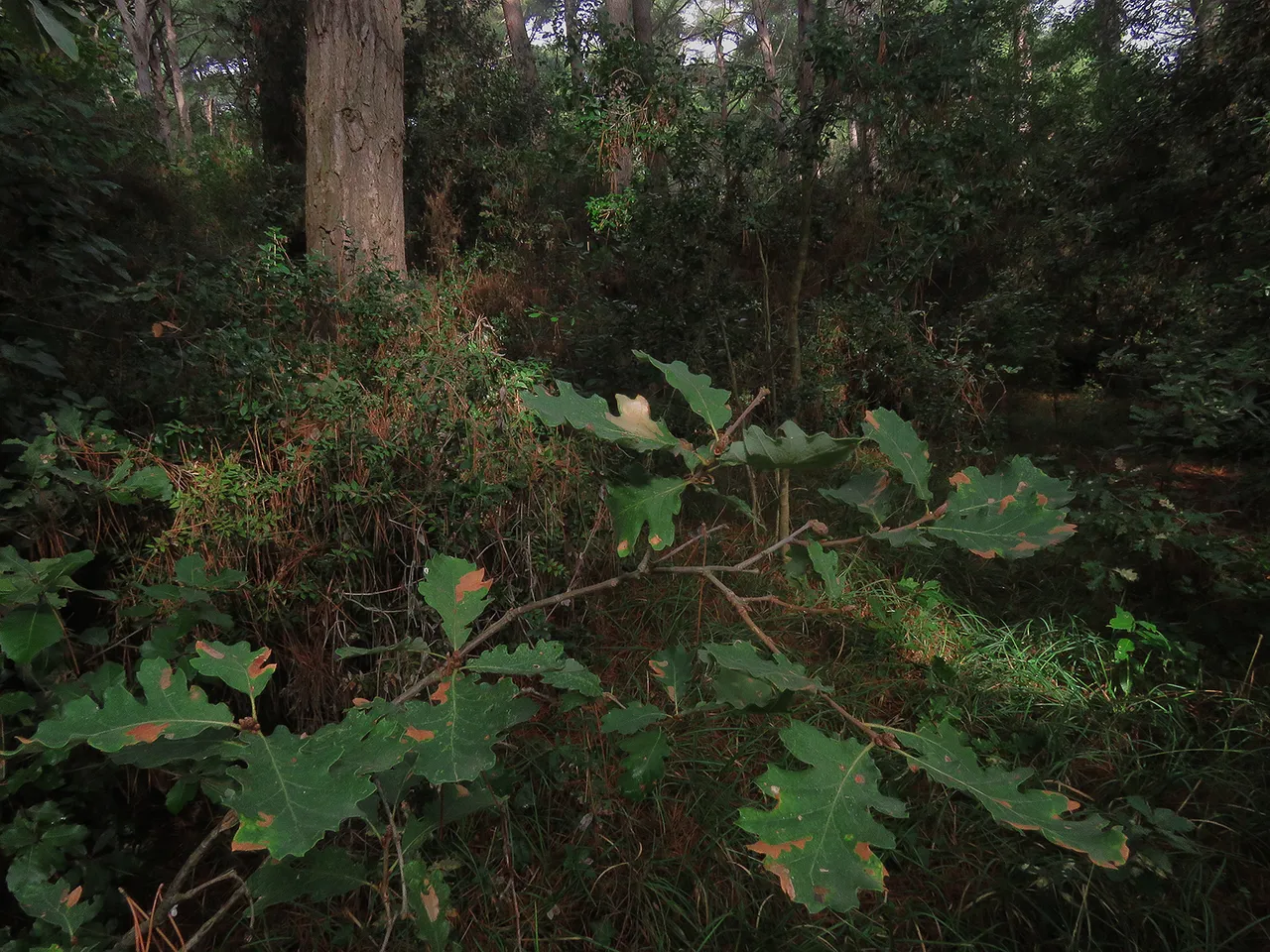There is a forest park on the outskirts of the city called Pula. I mean, there are at least two large forest parks on the edges of that city, but there is one that I regularly visit when I have something to do or buy in Pula. It's called Busoler and is situated along the route that, passing through some small villages, leads back to Medulin, my hometown.
I happened to stop in Busoler on quite a few occasions, mostly during the summer, and I photographed some plants, insects, and spiders. All those photographs were already published here on Hive. Today, after taking care of a few things in a few offices in the city and buying a few stuff in a few big stores, I spent an hour or so under the pine trees of Busoler and I found a few small mushrooms there.
You can see only one mushroom photographed from two slightly different angles in these two shots. Showing all the features of a parasol-shaped mushroom like this in just one shot is practically impossible, in my experience. If you show the top of the cap, the gills or other structures underneath are invisible. If you show the gills or pores - forget the top of the cap.
The mushroom shown here is a very small one. Becouse of its cap the mushroom resembles a miniature version of the big, meaty parasol mushroom. In the following photograph ...
... you can see the same mushroom and another one of its kind, but this time they were photographed from a distance that shows more of the setting. Besides the little parasols, you can also see plenty of needles fallen from the pines and the grass on which the mushrooms are growing.
The Crinipellis scabella - that's the name of the species, often grows on dry, decaying grass but can be also seen on wood and soil sometimes.
I never pick such small mushrooms so I have never asked myself if Crinipellis scabella is or isn't edible. But today I came across an Internet site that states: "Crinipellis scabella is poorly edible. The mushroom tastes mild."
Who knows, maybe I'll try it one day. Not very soon, though. I'm more into photographing the mushrooms than picking and cooking them lately. Not far from these Crinipellis scabella, less than a meter, I think ...
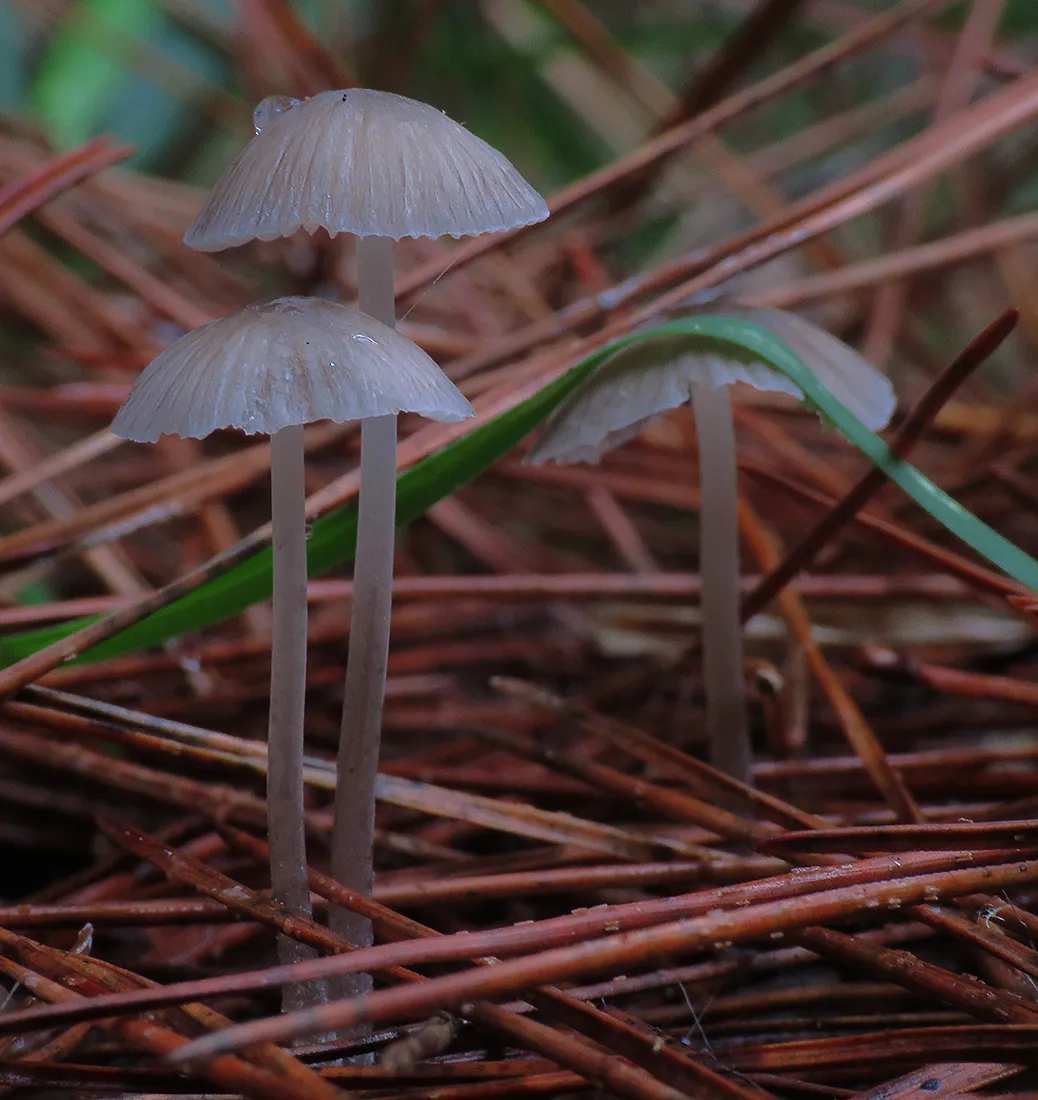
... I photographed three Mycena capillaripes fruiting bodies. These mushrooms grow mostly under the conifers, but don't be too surprised if you find them on leaf litter under deciduous trees. In the following photograph ...
... you can take a good look at the forest setting. The smaller shrubs and trees are nicely decorated with dry needles fallen from the much taller pines.
These are the Mycena seynii mushrooms.
Mycena seynii is a fungus that accelerates the decay of pine cones fallen from the trees ...
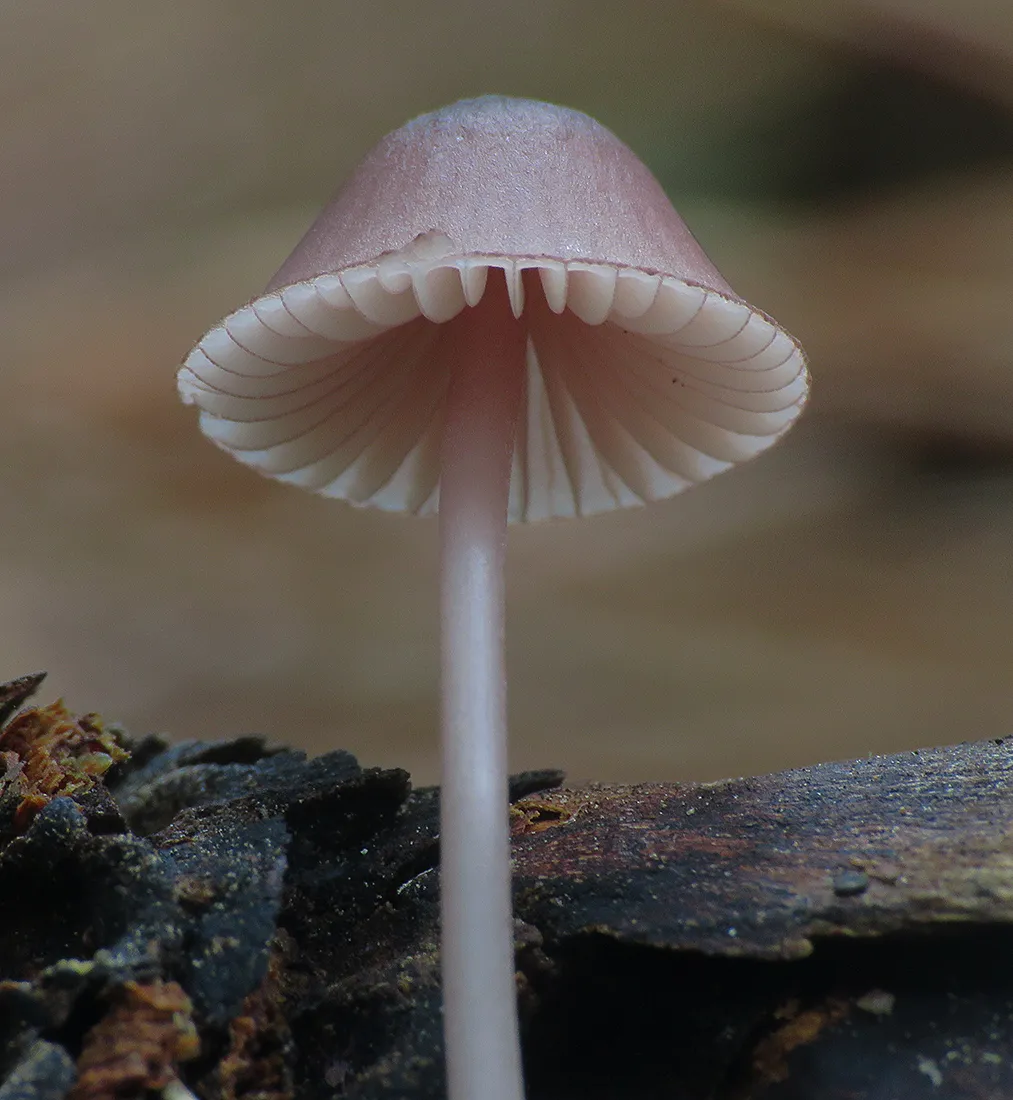
... so when the time i right, usually in autumn here where I live, its lovely, pinkish fruiting bodies ...
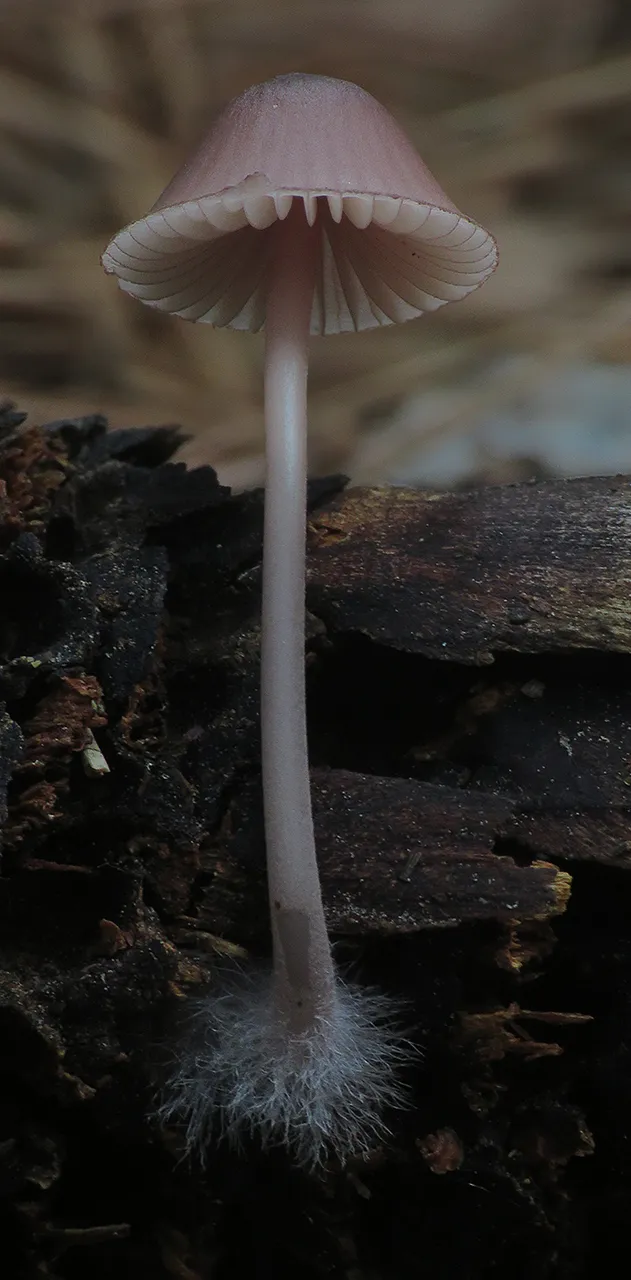
... grow between the scales of a cone. In this photograph, you can see a Mycena seynii mushroom that grows on an old cone in an advanced state of decomposition so the base of the fruiting body isn't hidden by scales. It was a great opportunity to photograph the entire mushroom that looks like the ones in simplified drawings I saw in some books, drawings that show the part of Mycena seynii usually hidden by the scales of the pine cone. In the following photograph ...
... you can see two Mycena seynii mushrooms on a relatively fresh cone.
Here you can take another quick look at the surrounding scenery. The branches of a small, shrub-like oak tree in the foreground, the trunk of a tall pine tree in the background, and many small, evergreen shrubs and trees in the middle.


